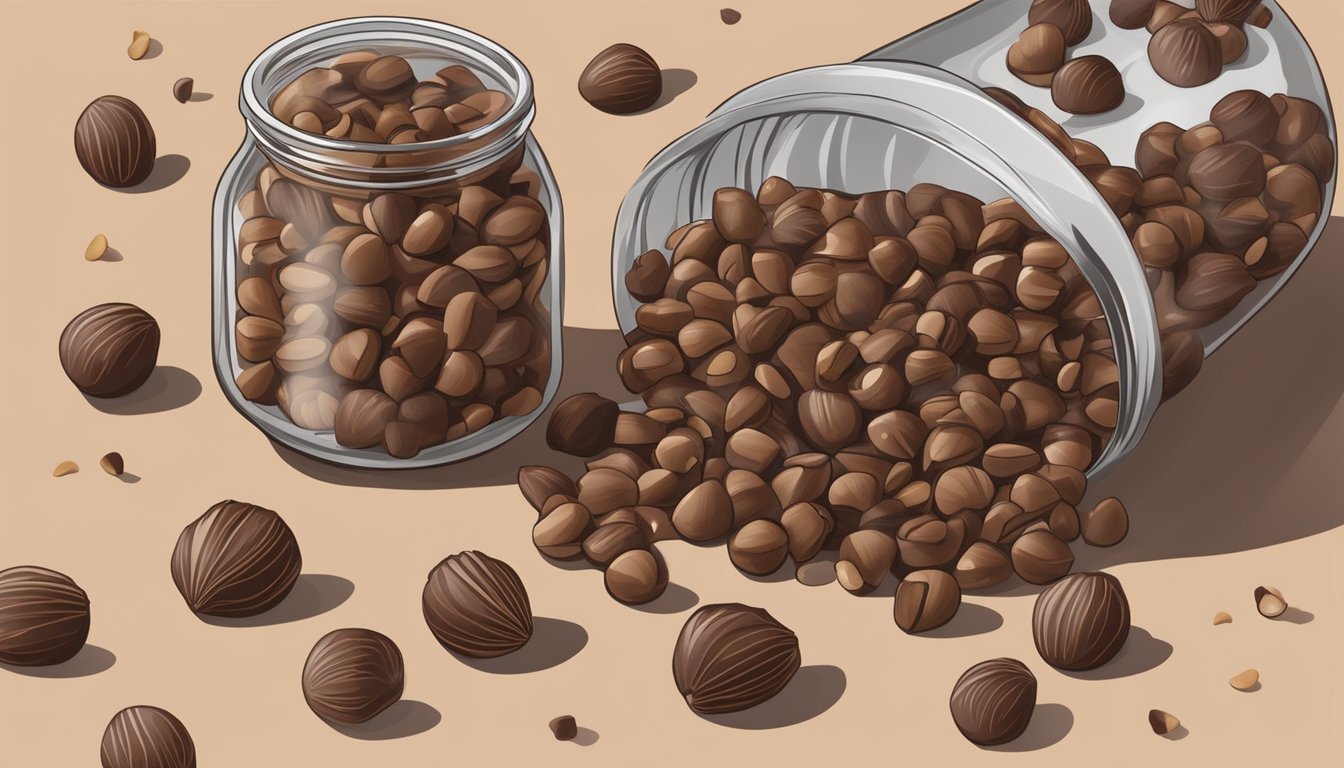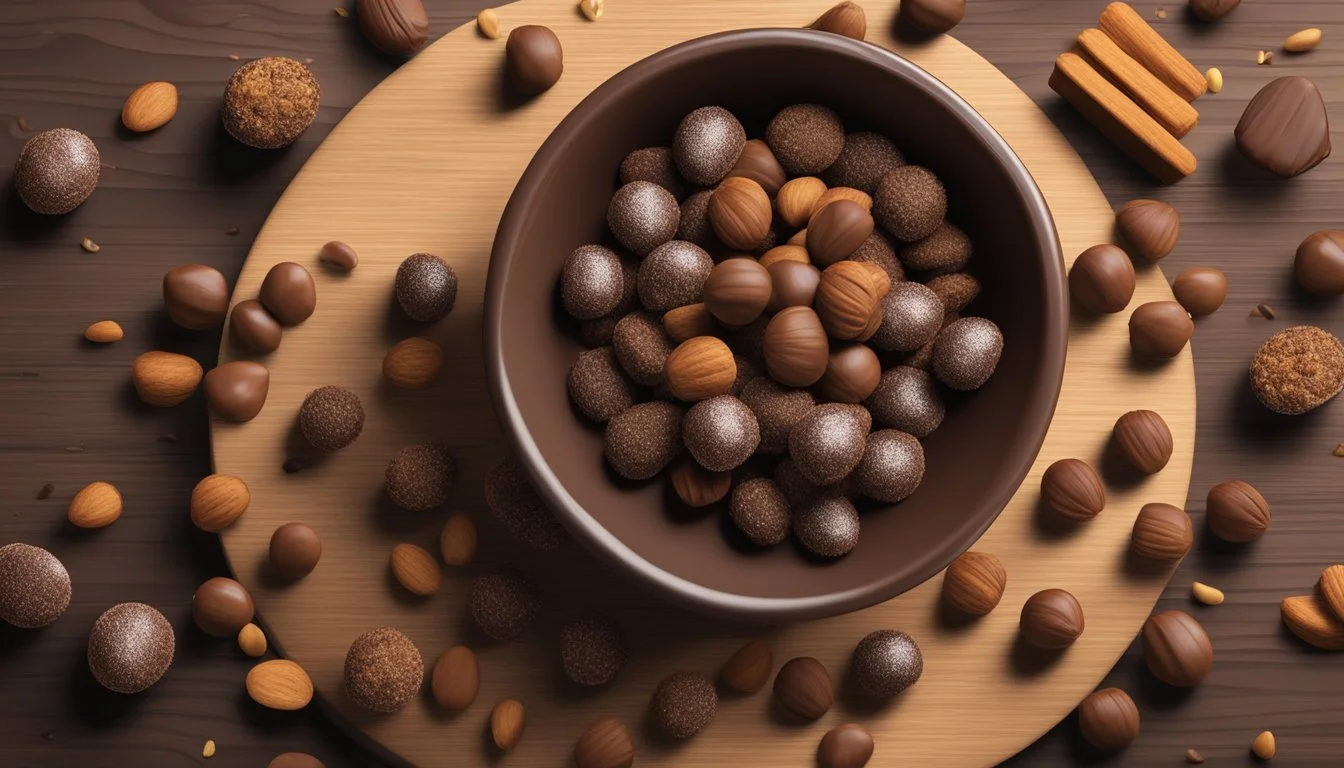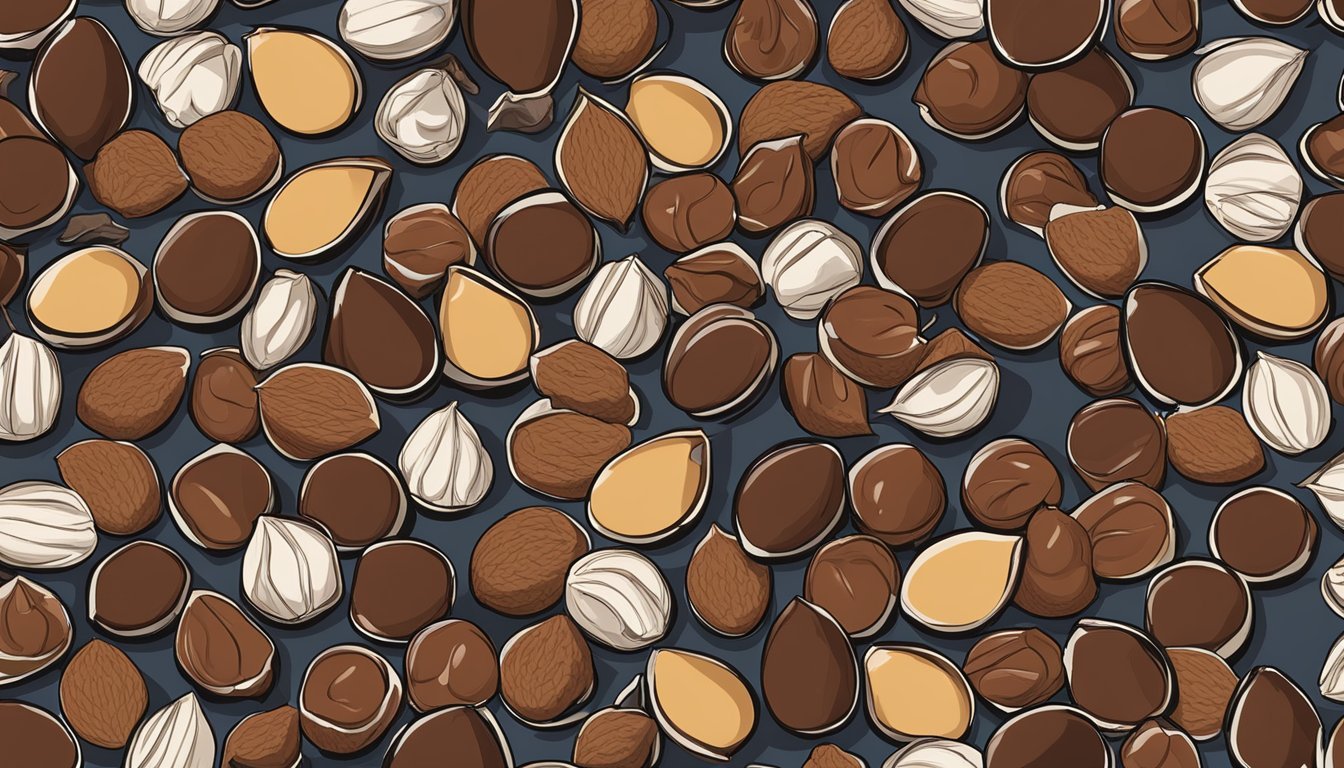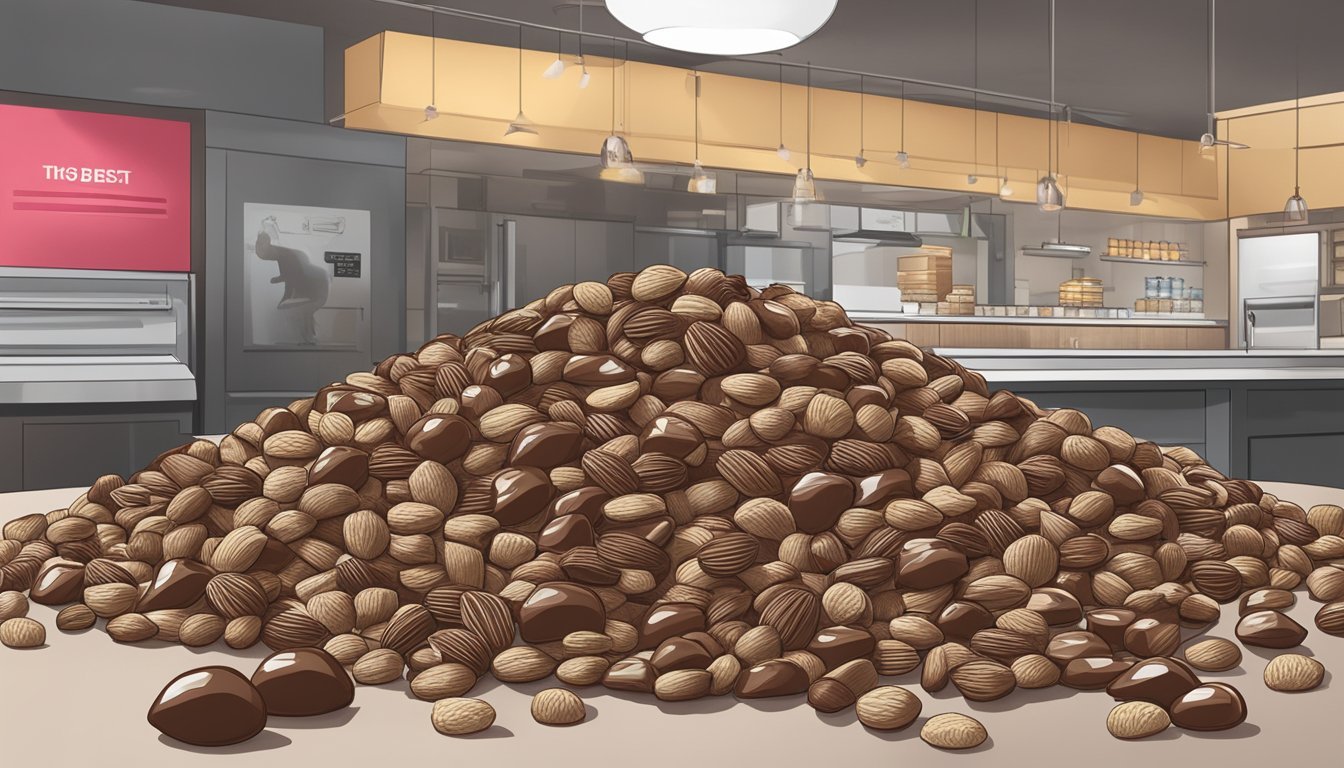How Long Do Chocolate-Covered Nuts Last?
Shelf Life and Storage Tips
Chocolate (What wine goes well with chocolate?)-covered nuts (What wine goes well with nuts?) are a delightful treat that combine the rich, indulgent taste of chocolate with the wholesome crunch of nuts. As both a popular snack and a common choice for gifts, their shelf life is a practical consideration for consumers. The longevity of these confections is influenced by several factors, including the type and quality of chocolate used, the freshness of the nuts, and the conditions under which they are stored.
Properly stored, chocolate-covered nuts can last a significant amount of time. Dark chocolate coatings, known for their higher cocoa content and lack of dairy, typically allow for a longer shelf life compared to milk or white chocolate varieties, which contain milk solids that can spoil more quickly. Additionally, the integrity of the nut inside plays a role; nuts themselves are rich in oils which can turn rancid if exposed to heat, light, or air for extended periods.
To maximize shelf life, these confections should be kept in a cool, dark place, preferably in an airtight container to prevent the exposure to moisture and foreign odors which can affect the taste and freshness. While refrigeration can extend their shelf life further, it may also affect the texture and flavor of both the chocolate and the nut. Hence, storage recommendations may vary based on the environmental conditions and intended use.
Understanding Chocolate-Covered Nuts
Chocolate-covered nuts are a confectionery delight combining the rich flavor of chocolate with the crunchy texture of various nuts. They offer a range of flavors and health benefits, serving as a popular choice for snacks and gifts.
Components and Varieties
Chocolate-covered nuts consist of whole or chopped nuts coated in a layer of chocolate. The chocolate can be dark, milk, or white chocolate. Quality plays a crucial role; higher cocoa content in dark chocolate provides a less sweet but more intense chocolate flavor. Milk chocolate offers a creamier, sweeter taste, while white chocolate is rich in cocoa butter (how long does cocoa butter last?) and sugar (how long does sugar last?), providing a buttery sweetness.
Nuts: Common nuts used include almonds, peanuts, pecans, walnuts, and brazil nuts.
Flavor Additions: sea salt (how long does sea salt last?), peanut butter, or coffee flavoring.
Health and Nutritional Considerations
Chocolate-covered nuts offer nutritional benefits due to their core components. Nuts are packed with fiber, protein, and healthy fats, both saturated and unsaturated. They also contain essential nutrients while being relatively low in cholesterol.
Nutrient Type Nutrient Benefits Fiber Aids digestion Protein Supports muscle repair and growth Healthy fats Contribute to heart health
However, they are calorie-dense and often high in sugar and fat due to the chocolate coating. Moderation is key when consuming them to maintain a balanced diet.
Popular Uses and Occasions
Chocolate-covered nuts are versatile and enjoyed in various settings. They're often presented as gifts for friends or on special occasions due to their gourmet appeal. As a snack, they satisfy a sweet tooth with their rich, complex flavors.
Desserts: Incorporated into cookies, brownies, or cakes for added texture.
Occasions: Valentines, Christmas, or as party favors.
These treats cater to those looking for a substantial, yet indulgent, food option.
Proper Storage Techniques
For chocolate-covered nuts to maintain their quality, flavor, and texture, it is essential to store them under proper conditions, away from moisture and strong odors.
Optimal Conditions
Chocolate-covered nuts will remain fresher longer when stored in an environment that is cool and dry. Ideal storage temperatures are between 60°F and 70°F (15°C and 21°C), with a humidity level of less than 50% to prevent condensation. Different types of chocolate coatings have varying storage needs:
Dark chocolate-covered nuts are more resilient and can last longer due to lower milk content.
Milk chocolate and white chocolate-covered nuts are more sensitive due to higher dairy content and should be consumed more quickly.
Storing these treats in a dark place will also protect them from light that can degrade the chocolate's quality.
Containers and Wrappings
To retain freshness and prevent odor absorption, chocolate-covered nuts should be kept in airtight containers. Suitable options include:
Tins with tight-fitting lids
Airtight plastic containers
Wrapping chocolate-covered nuts in parchment paper or wax paper before placing them in the container can minimize exposure to air. If one opts to refrigerate, ensure the container is sealed to avoid moisture and odors. Freezing is an option for long-term storage, but nuts should be wrapped and containerized appropriately to prevent freezer burn and protect the nuts' texture.
Maximizing Shelf Life
To preserve the quality and extend the shelf life of chocolate-covered nuts, optimal storage conditions and proper handling are imperative. Adhering to the right temperature and environment, as well as following specific handling procedures, can greatly influence their longevity.
Temperature and Environment
Chocolate-covered nuts maintain their quality best when stored in a cool, dry place. Temperatures should ideally be kept below 70°F (21°C) to prevent the chocolate from melting and nuts from becoming rancid. A refrigerator can be used for extending shelf life, but be aware of potential moisture which can lead to a sugar bloom. If one chooses to freeze chocolate-covered nuts, they should be placed in an airtight container to minimize exposure to air and moisture, which can also cause a chocolate bloom, whereby fat or sugar crystals rise to the surface creating a whitish coating.
Best environment: Cool, dry place
Avoid: Direct sunlight, high humidity
Refrigerator: Up to 3-6 months
Freezer: Up to 6 months or longer
Handling Procedures
One should handle chocolate-covered nuts with clean, dry hands or a spoon to prevent introducing moisture or contaminants that could lead to spoilage. Using separate utensils for different food items will also help in keeping them uncontaminated. When serving or packaging them, ensure that any containers or bags used are dry and sealed well. This approach keeps environmental odors and humidity at bay, thus maintaining quality and freshness.
Use clean, dry utensils
Store in an airtight container
Keep sealed from external odors and moisture
Creative Uses and Recipes
Chocolate-covered nuts are versatile treats that can easily be incorporated into a variety of confections and desserts. Here, readers will discover how to craft both simple snacks and more elaborate sweets using a handful of ingredients, often needing just a microwave, baking sheet, and a bit of creativity.
Simple Confections
Simple confections are a great way to enjoy chocolate-covered nuts with minimal prep time. They can be made using just a few ingredients, such as high-quality chocolate chips, roasted nuts, and optional additions like sprinkles for a decorative touch.
Basic Chocolate-Covered Nuts Recipe:
Ingredients: Roasted nuts, chocolate chips, and optional sprinkles for decoration.
Instructions:
Melt chocolate chips in a microwave-safe bowl, stirring every 30 seconds to prevent burning.
Dip roasted nuts into the melted chocolate and lay them on a lined baking sheet.
If desired, add sprinkles while the chocolate is still wet.
Allow the chocolate to set at room temperature, which should take about 15-30 minutes.
These treats are not only easy to make but also lend themselves well to customization. One can add a pinch of sea salt for a sweet and salty twist or drizzle honey for an extra hint of sweetness.
Advanced Desserts
For those who are ready to step up their culinary game, chocolate-covered nuts can be integrated into advanced desserts that require more baking skills and a longer cook time.
Chocolate Nut Tart:
Ingredients: Pie crust, chocolate chips, heavy cream, roasted nuts, cinnamon.
Instructions:
Prep time: 20 minutes
Cook time: 45 minutes
Preheat the oven and prepare the pie crust on a baking sheet.
Melt chocolate chips with cream in a saucepan over low heat, stirring until smooth.
Spread the roasted nuts over the pie crust and pour the melted chocolate mixture on top.
Bake in the oven until the filling is set.
Sprinkle cinnamon on top of the tart for enhanced flavor.
Desserts like these combine the rich taste of nuts and chocolate with the depths of flavors like cinnamon and reveal how easily simple ingredients can be transformed into elegant desserts.
Recognizing and Addressing Spoilage
When it comes to chocolate-covered nuts, understanding the indicators of spoilage and taking steps to preserve their freshness is paramount. Proper identification and handling can significantly extend their enjoyable shelf life.
Signs of Deterioration
Chocolate-covered nuts should maintain a firm texture and their chocolate coating should have a consistent, glossy appearance. However, spoilage can manifest in several ways:
Texture changes: If the nuts have softened or the chocolate appears flaky or grainy, they may have passed their peak freshness.
Mold Presence: Visually inspect the nuts for any signs of mold, which typically indicates that the product has gone bad and should not be consumed.
Off-putting odors: Any unusual smells can also be an indication that the chocolate-covered nuts have spoiled.
It's essential to trust one's senses; if the nuts look, smell, or taste off, they should be discarded.
Preventing and Dealing With Bloom
Maintaining the quality of chocolate-covered nuts involves proper storage to prevent unwanted changes like chocolate bloom, which can affect their appearance and texture. Here's how:
Chocolate Bloom: There are two types of bloom – fat bloom, caused by changes in fat crystals, and sugar bloom, resulting from moisture. While not harmful, bloom can mar the appearance of chocolate with a grayish-white coating.
fat bloom: occurs due to temperature fluctuations that cause cocoa butter to rise to the surface.
sugar bloom: results from exposure to moisture, causing sugar crystals to form on the chocolate's exterior.
Prevention: To prevent bloom and extend shelf life, store chocolate-covered nuts in a cool, dry place away from direct sunlight. They can be frozen to prolong freshness, but it's vital to package them well to prevent freezer burn and moisture condensation.
Freezing: Place them in an airtight container or sealable plastic freezer bag before freezing to protect against moisture and odor absorption.
Reheating: If frozen, thaw the nuts in the refrigerator to minimize temperature shock and condensation, which can lead to sugar bloom.
In handling chocolate bloom, gently reheating the chocolate can sometimes restore its appearance, but this may not always be practical or effective for chocolate-covered nuts. However, chocolate bloom does not affect the safety of the nuts for consumption.






